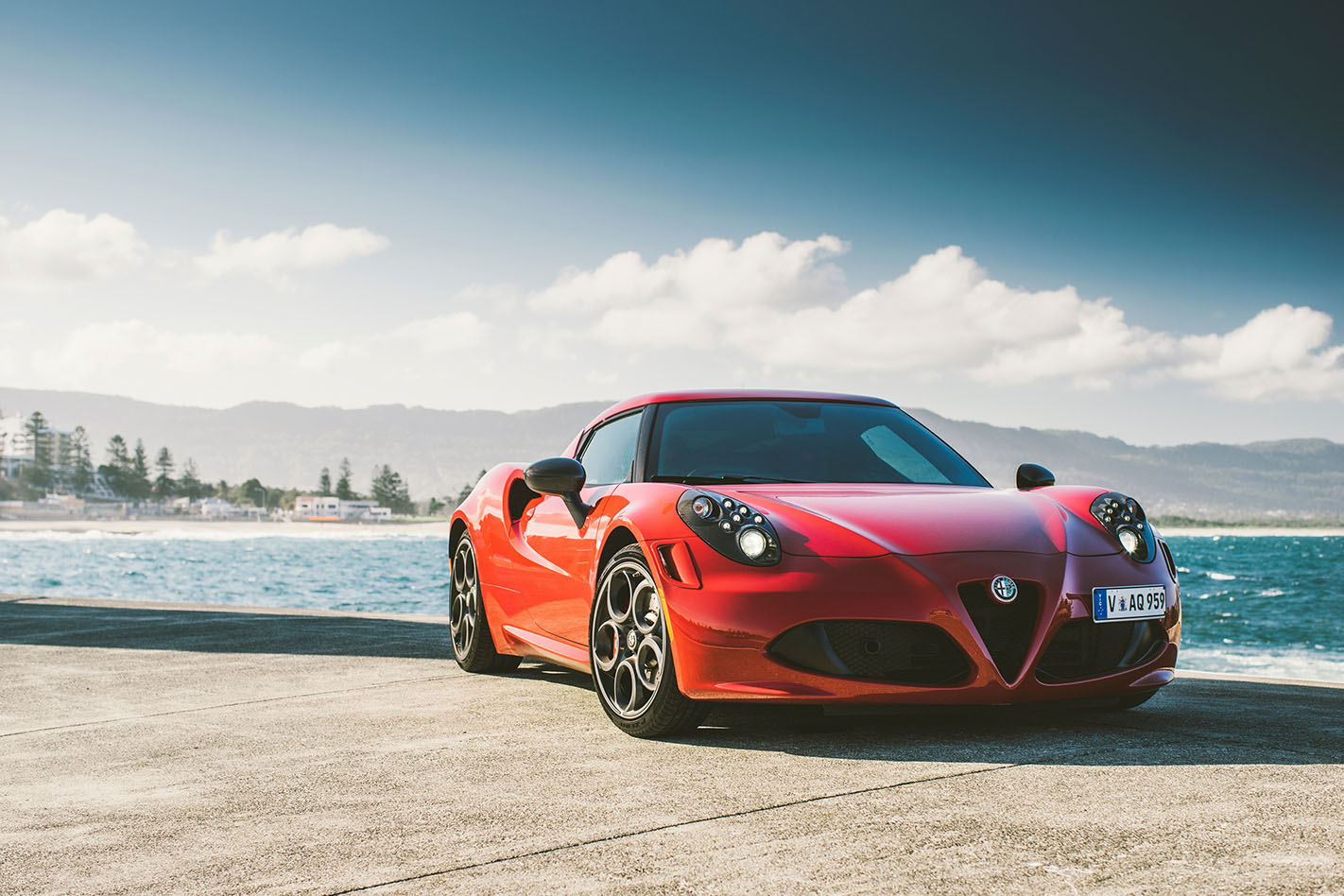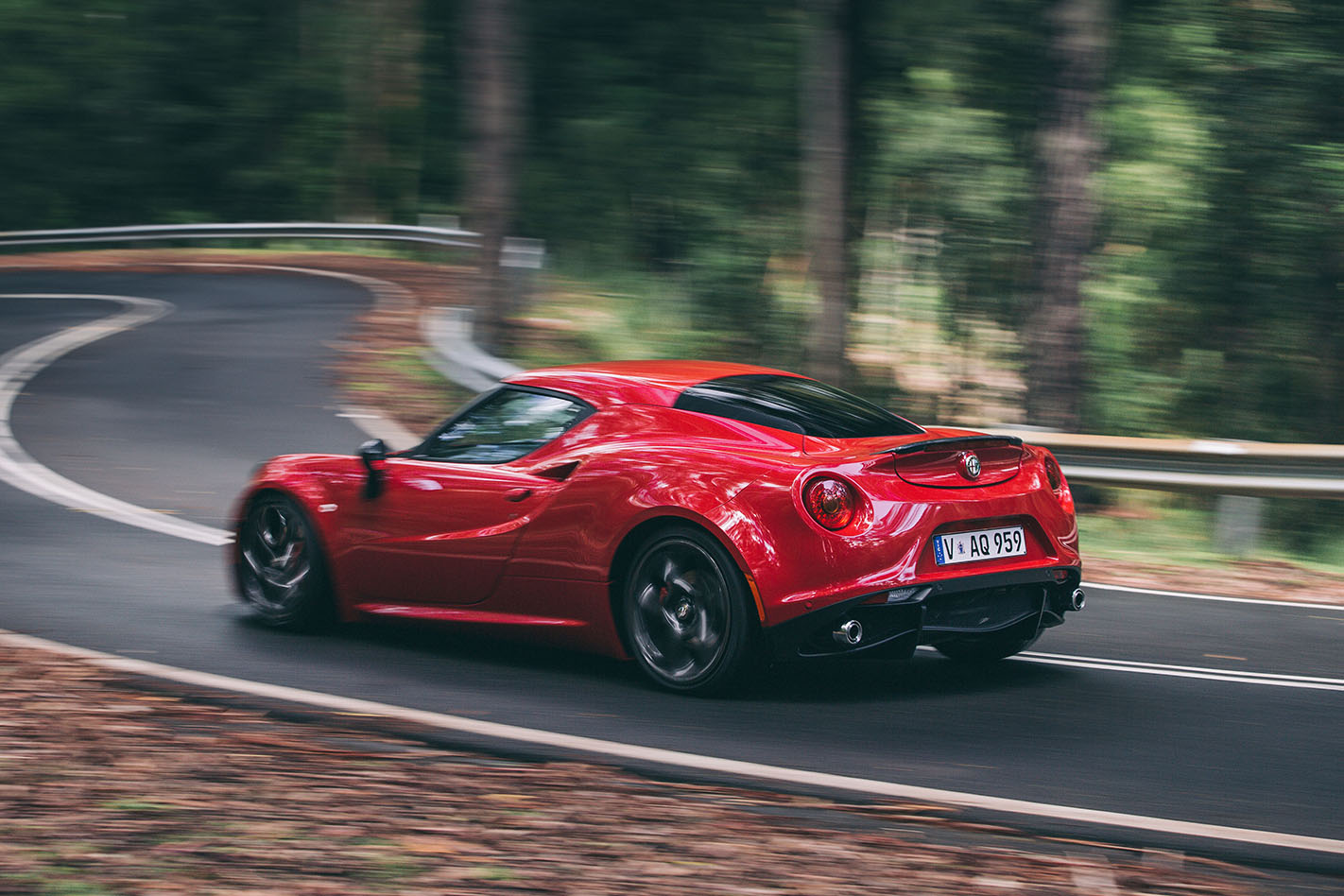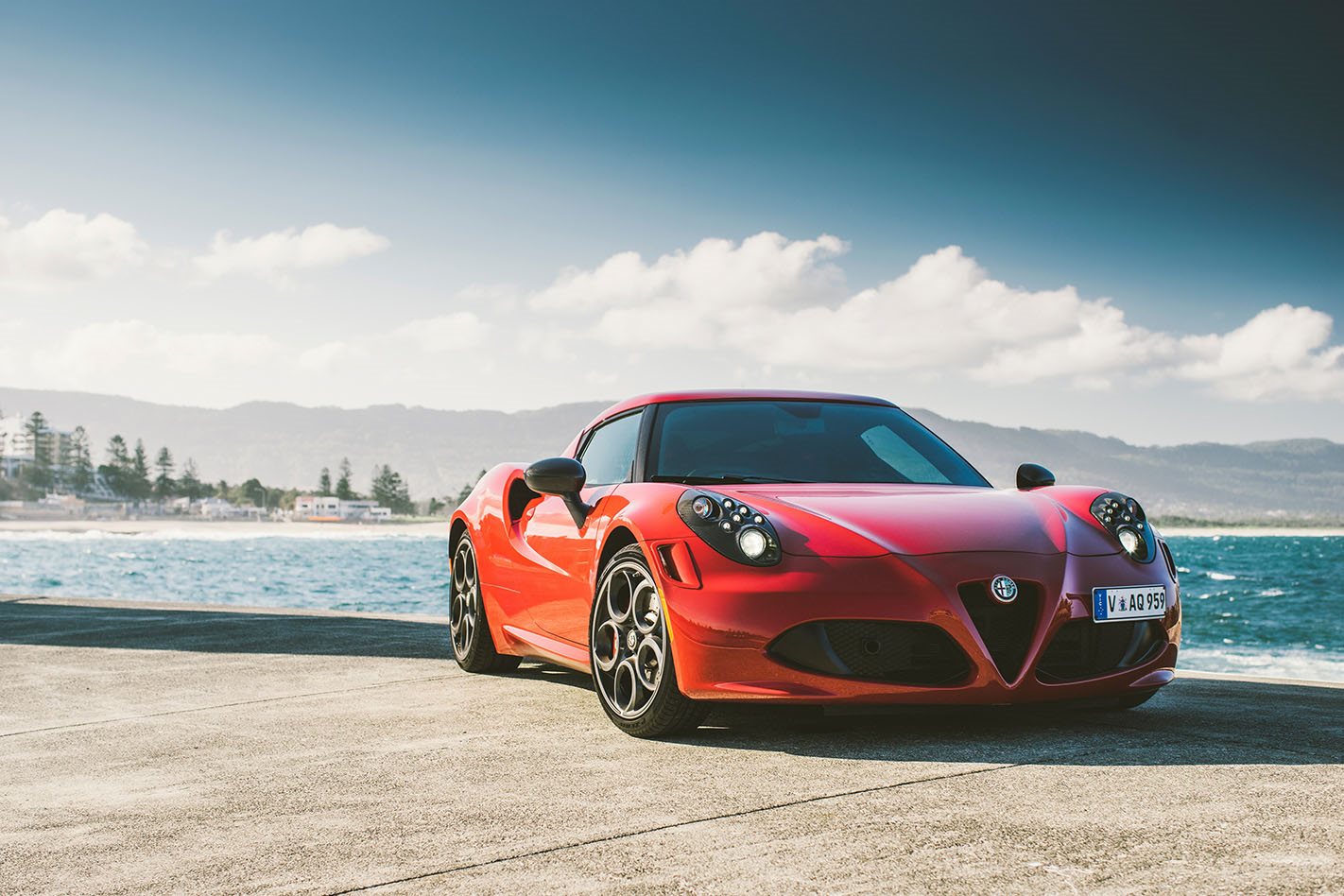What a captivating, confounding and frustrating thing the Alfa Romeo 4C is. Actually, ‘was’ is more accurate, given Alfa has decided, after seven eventful and controversial years, to cease production. So how shall we remember the 4C? And should we be upset that it’s no more? The first question is tricky, so I’ll start with the second: yes, we should care.

For all its flaws (and there are many) we shouldn’t forget that the 4C is pretty much everything a petrolhead could ask for. It’s Italian, mid-engined, and because it’s built around a carbonfibre tub, it’s also truly exotic. And light. Compared to a Porsche Cayman, the 4C weighs 350kg less. Further, at $89,000, has there ever been a more affordable carbon-tubbed sports car? And then there are those looks. Horrible ‘fly eye’ headlights aside, no-one could argue this car isn’t beautiful.
It was also hard not to get caught up in the sheer audaciousness of the 4C’s development. Who else but Alfa would pin its future, and hopes of cracking the all-important US-market, on a tiny lightweight sports car?

To be fair, we were all aboard the hype train. After years of disappointing Alfas, the 4C glimmered like a beacon. It was a new beginning; a circa-900kg beauty primed to fill the middle ground between a Lotus Elise and the Cayman. It sounded perfect.
The first sniff of trouble came during the 4C’s development when rumours surfaced of fundamental handling issues. By the time the international launch rolled around at Alfa’s Balocco test track, however, the news was overwhelmingly positive. For a few glorious months, it seemed Alfa had pulled it off.

It wasn’t until cars were delivered to other markets – Aussie examples arrived in 2015 – that things began to unravel. “Charmless four-pot”, “low-rent cabin plastics”, “snappy handling and vicious tramlining” were the findings of respected road testers. And while the 1.75-litre engine was torquey and fruity sounding, it droned and lacked the engagement of a Cayman’s aspirated flat-six.
Sales never really took off. In 2015 and ’16, the 4C shifted around 1000 units per year in Europe, and around half that in the US. But by 2018, those volumes had more than halved. Australians bought a total of 300 examples.

So, it wasn’t great to drive, nor a sales success. A failure, then? Well yes, and no. In true Alfa style, the objective side of the equation only tells part of the story. The reality is that the world is a brighter place for having had the 4C. It’s ambitious, endearing, and somehow manages to encapsulate all that is both right and wrong with Alfa Romeo. Let’s hope that’s how it’s remembered.
COULD IT BE A FUTURE CLASSIC?
You only need to see how well prices of second-hand 4Cs are holding up to know ‘modern classic’ status is on the cards. Exclusivity is also on your side, given low Aussie volumes. Should ownership sound enticing, you’ll need at least $70,000 for a 2015-16 example with 25K on the clock. Early cars had some minor gearbox foibles; also check closely for signs of bubbling leather on the dash and door trims.
AUSSIE SALES
- 2015 – 149
- 2016 – 68
- 2017 – 29
- 2018 – 22
- 2019 – 29
- 2020 (so far) – 3






